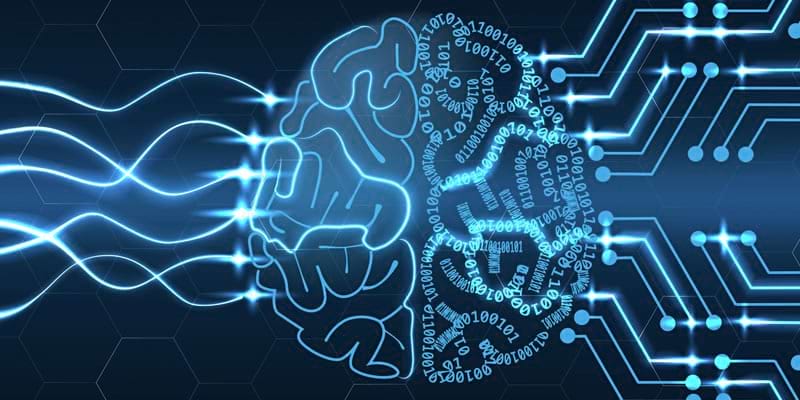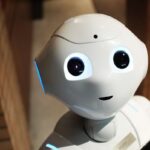Artificial Intelligence (AI) explained

Artificial Intelligence (AI): this article explains the concept of Artificial Intelligence (AI) in a practical way. Next to what it is (definition and origin), this article also highlights the AI research, The application including examples, the fear, Turing test and a distinction between Strong and weak Artificial Intelligence. After reading it, you will understand the basics of this innovation concept. Enjoy reading!
What is Artificial Intelligence (AI)? The definition and origin
Artificial Intelligence (AI) can be defined as the intelligence displayed by machines (including robots and computers). It’s a concept that comes from computer science.
Origin
The concept was first introduced in 1955 by American computer scientist John McCarthy in a co-authored article ‘The Darmouth Summer Research Project on Artificial Intelligence‘. In this book, he describes AI as a machine behaving in a way that we would refer to as intelligent if displayed by a human.
Nevertheless, it’s difficult to define what ‘intelligence’ exactly is, so defining AI is not an easy thing. Generally speaking, one could say that AI is a level of intelligence that humans have insofar not been able to program computers with.
AI research
Today, there’s still a lot of research being conducted into Artificial Intelligence in a variety of fields, including robotics and computer science.
These subfields are usually based on social factors, including human characteristics such as reasoning, gathering knowledge, planning, learning, data annotation, natural language processing, perception, and the ability to express opinions.
They also focus on the ability to move and/or manipulate objects. Think for instance of using AI in robots and drones. AI research itself is based on many other sciences, including computer research, mathematics, psychology, linguistics, philosophy, neuroscience and artificial psychology.
Application
Principally, the term AI is used when a machine or device mimics human cognitive functions (including the ability to think). Recognising signs and symbols is not considered part of AI, because this is routine technology. For a few years now, there have been an increasing number of successful applications of Artificial Intelligence. These are becoming increasingly well-known:
- Human speech, the most famous example being Apple’s digital assistant, ChatGPT, JasPer, Hypotenuse AI
- Military simulations, as preparation for major operations, disasters, attacks and defences.
Fear
During the 20th century, the fear was that Artificial Intelligence would result in large-scale unemployment. This didn’t happen; as it turned out, machines and robots are needed, but so are human beings. Machines and robots can’t be programmed and operated without people.
In the current 21st century, where AI technologies have become more advanced and are an essential part of the technology industry, there is still the fear that AI will increase the risk of mass unemployment.
The opposite is true, however; AI mainly helps to solve difficult and challenging problems in computer science. Computers are, among other things, better at maths than people. Human intelligence combined with the computing power and storage technology of a computer transcend human intelligence. This is the guiding principle of AI. Humans will always be required.
Turing test
A generally accepted test for Artificial Intelligence is the Turing test, created by the English mathematician Alan Turin, one of the founding fathers of computer science.
Turing developed the test in 1950. In it, he tried to distinguish human beings from computers. In the test, the computer has a conversation with a human being in order to demonstrate that it’s a machine intelligence. In order to ignore the issue of external appearances, communication takes place via typed text.
If the human being cannot be distinguished from the computer, the computer is said to portray intelligent, human behaviour.
Strong and weak Artificial Intelligence
Within AI, a distinction is made between strong and weak AI. Strong AI focuses on research into self-awareness. AI is used to create software that can possess human reasoning and problem solving skills. On the one hand, this results in Artificial Intelligence similar to human intelligence.
At the same time, it also leads to a non-human computer variant, with its own computer developed intelligence. Weak AI focuses on research in a number of limited subfields. It studies behaviours that may initially appear intelligent, but are not truly intelligent. Search algorithms and expert systems are examples of this.
It’s Your Turn
What do you think? What are your thoughts about Artificial Intelligence? Do you recognize the practical explanation or do you have more suggestions? What are the effects of Artificial Intelligence in your daily life?
Share your experience and knowledge in the comments box below.
More information
- Bench-Capon, T. J., & Dunne, P. E. (2007). Argumentation in artificial intelligence. Artificial intelligence, 171(10-15), 619-641.
- Boden, M. A. (1998). Creativity and artificial intelligence. Artificial Intelligence, 103(1-2), 347-356.
- McCarthy, J., Minsky, M. L., Rochester, N., & Shannon, C. E. (2006). A proposal for the dartmouth summer research project on artificial intelligence, august 31, 1955. AI magazine, 27(4), 12.
- Russell, S. J., Norvig, P., Canny, J. F., Malik, J. M., & Edwards, D. D. (2003). Artificial intelligence: a modern approach (Vol. 2, No. 9). Upper Saddle River: Prentice hall.
How to cite this article:
Mulder, P. (2018). Artificial Intelligence (AI). Retrieved [insert date] from Toolshero: https://www.toolshero.com/innovation/artificial-intelligence-ai/
Original publication date: 02/09/2018 | Last update: 02/09/2024
Add a link to this page on your website:
<a href=”https://www.toolshero.com/innovation/artificial-intelligence-ai/”>Toolshero: Artificial Intelligence (AI)</a>











